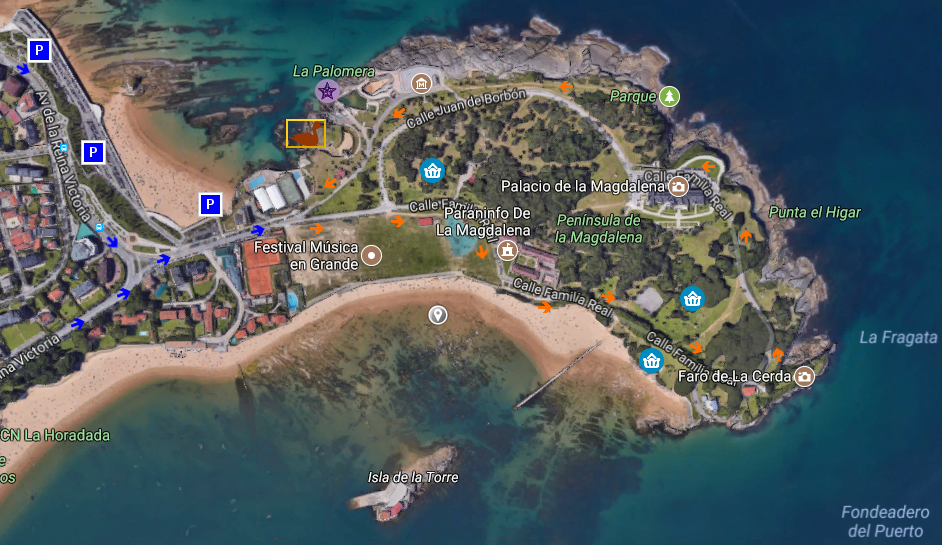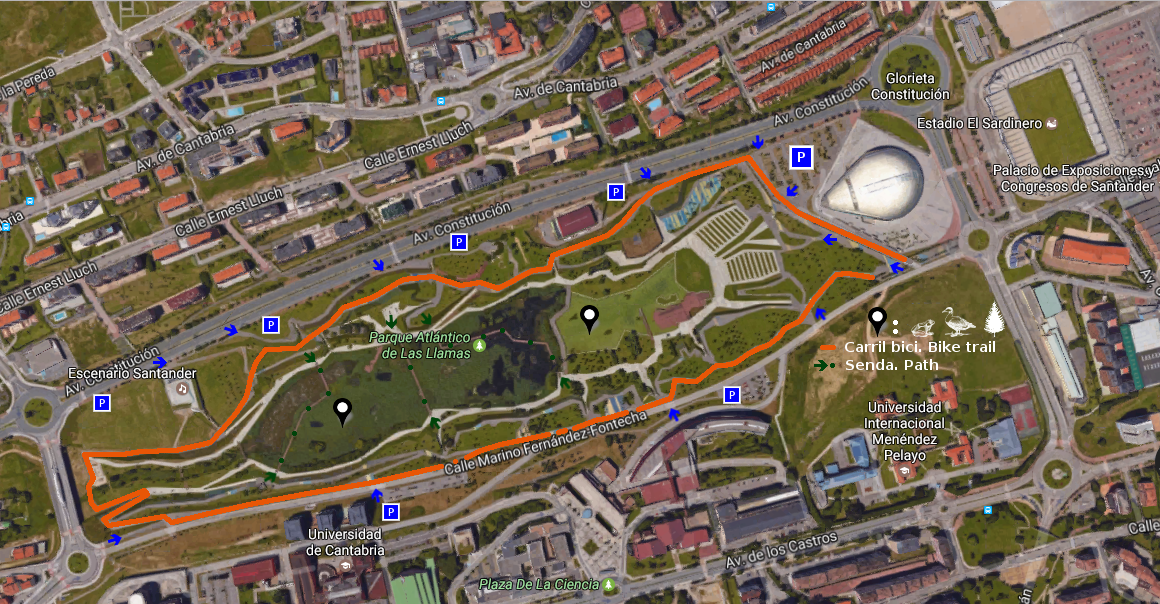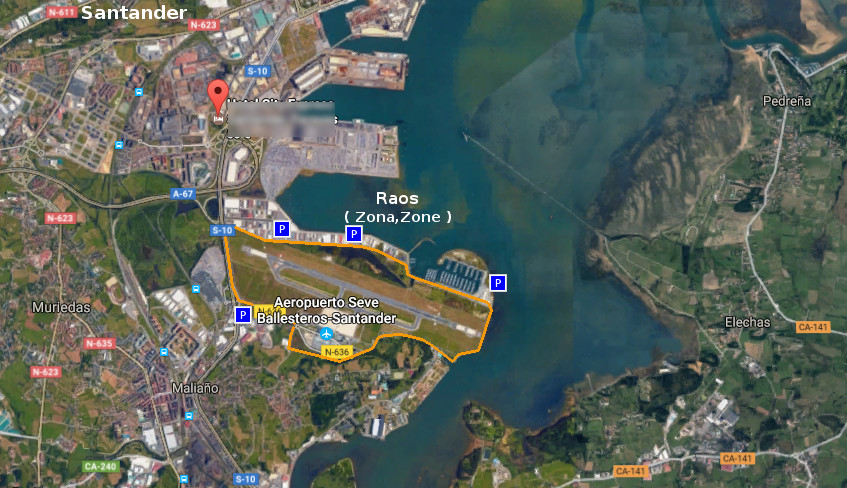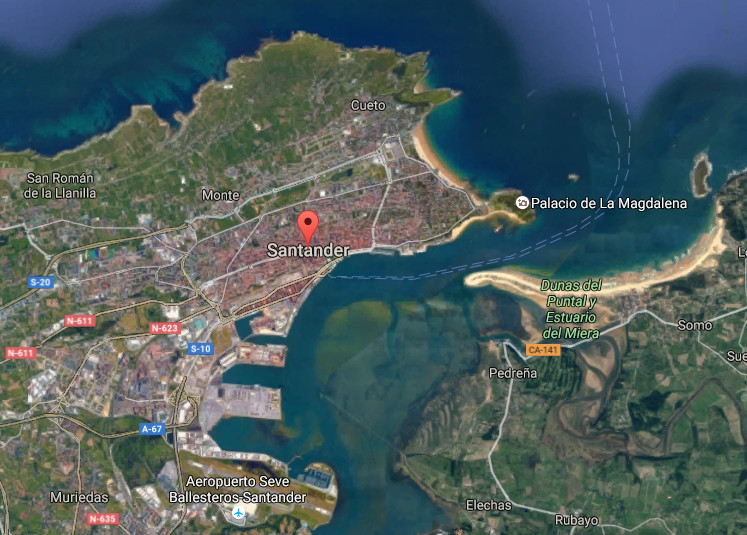Parque de Mataleñas
![]() El Parque de Mataleñas, ubicado en Santander, es una amplia zona verde de 18,5 hectáreas de extensión. Su emplazamiento en el extremo noreste de la ciudad constituye un gran mirador desde diversos puntos de su cara sur. Rodeado por carretera urbana, campos de golf y la Ensenada del Sardinero, ofrecen múltiples opciones; tanto dentro como en las proximidades.
El Parque de Mataleñas, ubicado en Santander, es una amplia zona verde de 18,5 hectáreas de extensión. Su emplazamiento en el extremo noreste de la ciudad constituye un gran mirador desde diversos puntos de su cara sur. Rodeado por carretera urbana, campos de golf y la Ensenada del Sardinero, ofrecen múltiples opciones; tanto dentro como en las proximidades.
Cuatro entradas dan acceso al recinto y se distribuyen a lo largo del trazado exterior que limita con la carretera. Cualquiera de los puntos de entrada proporcionan un recorrido y perspectiva únicos, avanzando a través de los senderos que recorren el conjunto. Verde camino de arboleda acompañado que regala variedad botánica de sencilla belleza.
Un gran estanque que termina su trazado en las cercanías de la playa de los Molinucos, donde la imaginación descansa, proporciona al caminante una ideal parada. Edificios singulares que formaban parte de la finca originaria, jardines y campas ocupan parte del territorio. Desde allí la línea imaginaria que supone la entrada a la Bahía de Santander puede ser contemplada desde todos sus puntos.
![]()
![]()
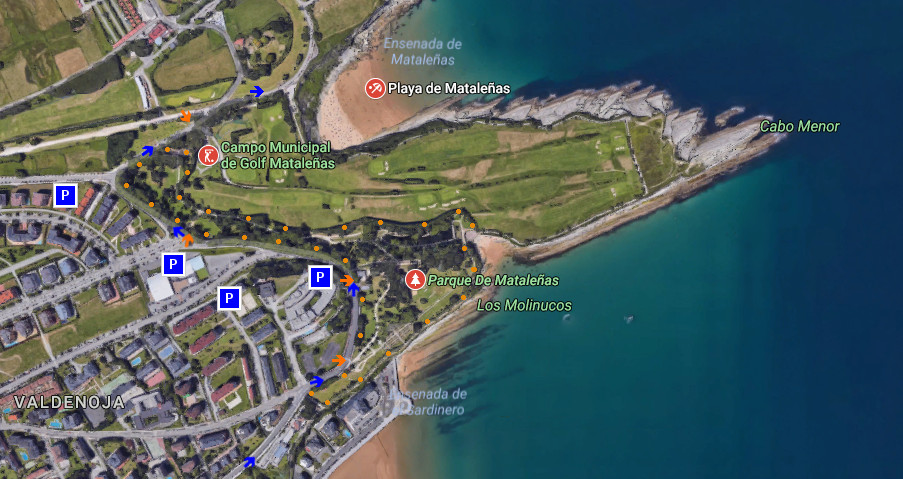
![]()
Mataleñas Park
![]() Mataleñas Park, located in Santander, is a wide green space of 18,5 hectares of extension. Its emplacement in the North-East extrem of the city constitutes a great viewing-point from diverse items of its south face. Surrounded by urban road, golf courses and the Inlet of El Sardinero, offer multiple options; so much inside like in the proximities.
Mataleñas Park, located in Santander, is a wide green space of 18,5 hectares of extension. Its emplacement in the North-East extrem of the city constitutes a great viewing-point from diverse items of its south face. Surrounded by urban road, golf courses and the Inlet of El Sardinero, offer multiple options; so much inside like in the proximities.
Four entrances lead to the enclosure and are distributed along the exterior tracing that borders on the road. Any of the entry points provide a unique tour and perspective, advancing across the paths that cross the set. Green way of grove accompanied that gives botanical variety of simple beauty.
A great pond that finishes its tracing in the surroundings of the beach of Los Molinucos, where the imagination rests, provide to the wayfarer an ideal stopped. Singular buildings that were forming a part of the original estate, gardens and meadows occupy part of the territory. From there, the imaginary line that supposes the entry to the Bay of Santander can be contemplated from all its points.
![]()


